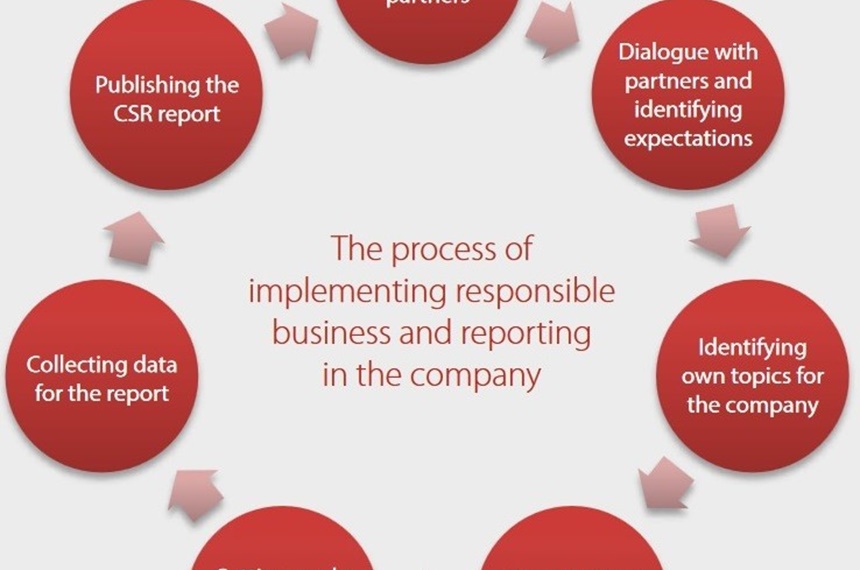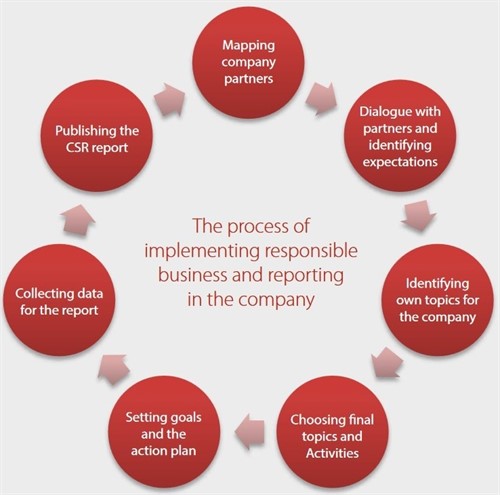
How to Implement CSR Reporting in Your Company? Part 1
What Should the Report Contain?
The report should include the information that readers are most interested in. This is why it is advisable to find out what expectations our partners have before choosing individual topics. The report should then be based on these expectations. In addition to economic matters, we must not forget topics in the area of environmental protection, such as waste management, greenhouse gas emissions, consumption of raw materials, energy and water and last but not least the protection of biodiversity. It should include topics such as employee care, health and safety at work, collective bargaining, ethics, fight against corruption, advertising andcommunication as well as others.
There are plenty of topics. All that remains is choosing the ones that are the most important for the company stakeholders and the company itself. The report should describe what has happened during a so-called reporting period. It is defined as the time period for which the company describes its results – usually one calendar year. Companies most often report in annual cycles, although bi-annual and tri-annual reporting cycles are used often as well. In order to make comparison easier, it is good if the data is disclosed in such a way which makes it possible to compare it with the company’s performance from previous years. This way, it is possible to observe trends and identify areas which require more work and improvement.
A data collection or calculation method should be clearly defined and this method should be used the same way every time so that it is possible to make comparisons between individual reporting periods. There are several guides on how to prepare a CSR report. Currently approximately 4,500 global companies publish such reports, which is few compared to the total number of international companies (approximately 80,000). However, 93 % out of the 250 largest global companies publish reports. Although Europe is the best at reporting, companies in the USA, Brazil, India, South Africa and China are starting to deal with this topic more and more as well. In certain countries, reporting is obligatory for large companies (Denmark, France) or state-owned companies (Sweden).
Stakehodler Dialogue
Stakeholders (i.e. company partners) create the environment in which the company functions. The choice of the most important partners depends on the focus of the company. However, good relations with partners are vitally important for the company. We should be able to identify the partners’ expectations of the company as well as whether the company’s products and services fulfil their expectations. Dialogue with partners (so-called stakeholder dialogue) is used in order to collect this information. The dialogue can have various forms – satisfaction surveys, interviews, press research, etc. Using this dialogue, we find out which topics are important for our partners and what information they require. In the next step, it is necessary to combine these topics with the company priorities and choose those that the company can focus on with its current personal and financial capacity. After choosing the topics it is advisable to set the goals that we want to achieve as well as to choose the way these goals are to be achieved. This is done by creating an action plan and appointing responsible persons. The last phase of the cycle should be informing about the achieved results, i.e. preparing the CSR report.

What Format of Sustainability Report Is Appropriate?
In the era of the Internet and electronic media, printing CSR reports is unnecessary and wasteful. An easier and cheaper way of delivering the report to its readers is publishing it electronically. The cheapest option is uploading the document in a PDF format. Some of the disadvantages of this option are the lack of interactivity and no possibility to provide immediate feedback. Thus the company that has written the report loses the option of receiving valuable customer opinions. A better solution is creating a custom application or interactive website which contains easily accessible information about the performance of the company. This format makes it possible to use videos, interactive graphs and to ask for immediate feedback from readers. However, certain basic principles should be followed:
- The CSR report has to be accessible for all company stakeholders / partners.
- The report can even include information that is not required by law or the directives used foreport preparation but that the company or its stakeholders consider important.
- Reports (or the information found in the reports) should be available in a form that is familiar to the target audience. For instance, employees can use the local intranet or the company notice boards, investors prefer having an electronic version at their disposal while the communication between the company and its customers can be realised via social media, the company website or the company marketing materials.
Learn more here.
Authors: Tatiana Čaplová, Radka Jurčáková (Pontis Foundation)

Follow us on